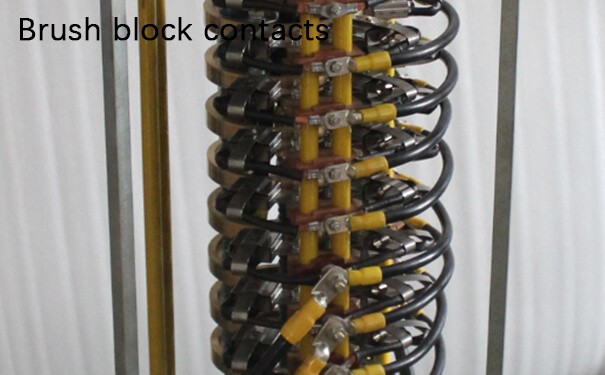In this comprehensive article, we will explore brush contact slip rings, discussing their principles of operation, types, material considerations, performance factors, maintenance, applications, and frequently asked questions.
Introduction to Brush Contact Slip Rings
Brush contact slip rings, an integral part of many electromechanical systems, are devices that facilitate the transmission of power and electrical signals from a stationary component to a rotating one in a system. This is a critical function as it supports the efficient operation of a wide array of machinery without the hindrance of tangled wires.
These devices primarily consist of a rotating member (the ring) and a stationary member (the brush). When in operation, the brush slides on the rotating ring, creating a constant electrical connection that ensures uninterrupted transmission of power or signals, despite the movement involved.
The importance of brush contact slip rings extends beyond their basic function of power and signal transmission. They play a key role in enhancing the functionality and performance of the systems they are incorporated into. For example, wind turbines, help facilitate power transmission from the rotating blades to the stationary grid. Similarly, industrial automation systems, enable seamless communication between the rotating parts of robots and stationary control units.
Their versatility and adaptability have seen brush contact slip rings being implemented in various fields, including medical technology, aerospace, robotics, and defense systems, among others. In medical imaging devices like CT scanners, slip rings prevent cable twisting while transferring power and signals between the rotating gantry and computer systems. In the field of aerospace, they help maintain communication between stationary systems and rotating satellites or radar equipment.
In essence, brush contact slip rings are pivotal in enabling the smooth and efficient operation of numerous systems across a spectrum of industries. This article aims to provide a deeper insight into their working principles, types, material selection, performance factors, and applications.
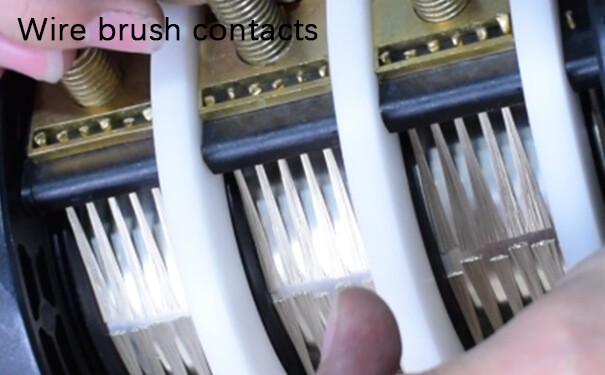
Brush Contact Slip Rings Operating Principle
At the heart of a brush contact slip ring’s functionality is a deceptively simple operating principle that solves a complex problem: maintaining an electrical connection between stationary and rotating systems. This is achieved through the physical contact between two essential components—the brushes and the slip rings.
Description of How Brush Contact Slip Rings Work
The operation begins with the slip rings, which are conductive rings attached to the rotating part of the machine. As the machine operates and the part rotates, the slip rings spin in unison. Stationary brushes made of conductive materials are then held against these rings. Despite the rotation, the brushes maintain constant electrical contact with the slip rings.
Through this contact, electrical current can flow from the brushes to the rings, allowing power and electrical signals to be transferred to the rotating part without any hindrance. This is essential in situations where wires cannot be used due to the rotational motion, which would cause tangling and eventually lead to wear and failure.
Basic Components
To achieve and maintain the physical connection necessary for the brush contact slip ring system, several basic components are uniquely designed:
- Brushes: Made from materials such as graphite, copper, and precious metals, these conductive blocks make direct electrical contact with the slip ring. The quality and composition of brush materials are tailored to the application’s electrical requirements and wear characteristics.
- Slip Rings: These are the concentric rings made of conductive material such as copper alloys fixed onto the rotating shaft. Their smooth, concentric surfaces are key to ensuring minimal wear on the brushes.
- Housing: This stationary structure encases the slip rings and provides a firm mount for the brushes. It protects the slip ring system from external elements such as dust, moisture, and other contaminants that may degrade its performance. In many cases, the housing is also designed to aid in electrical isolation and heat dissipation from the system.
Together, these components comprise a slip ring assembly that provides the continuous rotation and functional versatility critical in many advanced applications. The cohesive interaction between these parts ensures the seamless integration of the slip ring within countless devices, machines, and systems, facilitating the essential transfer of power and signals with reliability and precision.
Types of Brush Contact Slip Rings
Brush contact slip rings come in a variety of designs and configurations to cater to the diverse needs of the industries they serve. Each design is specialized to meet certain requirements or operate optimally within specific parameters.
Different Designs and Configurations
Capsule Slip Rings
Capsule slip rings, often referred to as miniature slip rings, are known for their compact size. Their design is particularly suited to applications where space is limited. Their small dimensions do not compromise their ability to transmit a multitude of signals. They are commonly used in compact devices such as cameras and medical equipment, where space is at a premium.
Pancake Slip Rings
Pancake slip rings stand out for their unique flat, disc-like design, unlike the cylindrical form of most other slip rings. The ‘pancake’ form factor is an effective solution when axial length (or height) is limited but radial space (or width) is less of a concern. They are commonly used in applications with stringent height restrictions but ample horizontal space.
Through-Bore Slip Rings
Through-bore slip rings are characterized by their hollow-shaft design. They feature a central hole through which other components, such as shafts, cables, or even fluids, can be routed. This type of slip ring delivers high performance and reliability in various applications, including packaging machinery, wind turbines, and rotary tables.
Wind Turbine Slip Rings
Wind turbine slip rings are customized slip rings designed explicitly for use in wind turbine systems. Durability is a critical factor in these designs, as these slip rings must be capable of withstanding harsh environmental conditions such as high winds, varying temperatures, and the corrosive effects of sea air in offshore installations.
Criteria for Selecting the Right Type
Choosing the correct type of brush contact slip ring is dictated by a host of factors, primarily dictated by the application’s needs. The space constraints of the equipment, the environmental conditions in which the slip ring will operate, and specific performance criteria, such as rotational speed, current requirements, number of signals, and signal type, all need to be considered while making a decision.
In conclusion, understanding these different types of slip rings and the conditions they are best suited for is an essential step in making an informed decision. By selecting the most suitable slip ring, you can ensure the best performance and longevity of the device or system in which it is installed.
Brush Contact Slip Rings Material Considerations
Material selection for brush and slip ring components is a highly significant step in the design process of brush contact slip rings. Materials must cater to the specific requirements of the application and take into account factors like electrical conductivity, wear resistance, and environmental conditions.
Common Materials Used for Brushes and Slip Rings
Carbon Brushes
Perhaps the most traditional choice for brush contact slip rings, carbon brushes are lauded for their low friction, superior lifespan, and good conductivity. These properties make them a go-to choice for a variety of applications, ranging from heavy-duty industrial machinery to smaller, more intricate devices.
Metallic Brushes (Gold, Silver, etc.)
Metallic brushes, typically made of gold, silver, or copper, offer high electrical conductivity for superior signal quality or reduced electrical noise. They are usually used for low-current applications due to their tendency to wear more than carbon brushes. Gold and silver brushes are often selected when exceptional performance and longevity are required, especially in precise or sensitive applications.
Advanced Composites
Advanced composite brushes encapsulate a blend of different materials, harnessing the strengths of various elements to enhance slip ring performance and lifespan. These composites may involve a mix of metals and carbon to provide an optimal balance between wear resistance, conductivity, and durability.
Factors Influencing the Selection of Materials
Electrical Conductivity
Since the core function of a slip ring is to transmit electrical signals or power, high conductivity is paramount. Materials with high conductivity, such as certain metals, can transfer signals more efficiently, reducing energy loss and boosting system performance.
Wear Resistance
Wear resistance is crucial given the constant contact and friction between the brush and the slip ring during operation. Materials that provide a higher resistance to wear will prolong the lifespan of the parts and result in less frequent maintenance and replacements.
Environmental Factors
Operating conditions can significantly influence the choice of materials. For instance, if the slip ring is to be used in a high-temperature environment, materials that can withstand such temperatures without degradation are preferable. Likewise, in corrosive environments or where exposure to moisture is high, materials that exhibit good corrosion resistance should be chosen.
In summary, selecting the optimal materials for brushes and slip rings entails understanding the specific needs of the application and balancing multiple factors such as electrical conductivity, wear resistance, and environmental conditions. The right choice here can significantly enhance performance, lifespan, and overall system efficiency.
Brush Contact Slip Rings Performance Factors
The performance of brush contact slip rings directly impacts the reliability and efficiency of the systems in which they are integrated. To maintain high-performance standards, numerous factors come into play. These factors must be optimized to ensure that the slip rings are well-suited for their respective applications.
Current Carrying Capacity
The current carrying capacity of a slip ring is crucial because it determines how much electrical current can be transferred safely and efficiently through the device without overheating or causing a failure. Various factors, such as material composition, brush size, and surface contact area, influence the slip ring’s ability to handle current. Engineers must optimize these aspects to ensure that the slip ring is appropriate for its intended application.
Voltage Levels
voltage levels are another key performance factor. Different slip ring assemblies may cater to specific voltage levels, impacting their suitability for various applications. Slip rings must be designed to handle the specified voltage ranges, as incompatible voltage levels can lead to inefficiencies, degradation of performance, or potential damage to the brush contact slip ring and the connected equipment.
Electrical Noise and Interference
Minimizing electrical noise and interference is essential in maintaining the quality and consistency of electrical signals transmitted through the slip ring. Various factors, such as material selection, brush tension, and shielded cabling, can help reduce electrical noise. This is particularly important in applications that demand precise signal transmission or sensitive equipment.
Rotational Speed
The rotational speed, or the rate of rotation of the slip ring, affects factors such as wear, heat generation, and the overall performance of the slip ring. High rotational speeds may increase wear on the brush surfaces or lead to heightened temperatures in the slip ring assembly. Designers need to carefully optimize the slip ring components and materials to withstand the required rotational speeds to preserve the performance and longevity of the assembly.
Temperature Stability
Temperature stability refers to the ability of a slip ring to maintain its performance and reliability across a range of temperatures. The materials and design of the slip ring must be compatible with the environmental temperature range of the application. Proper temperature stability ensures that there are minimal variations in conductivity, wear resistance, and other key performance factors across the intended temperature spectrum.
In conclusion, brush contact slip ring performance factors play a vital role in ensuring that the slip ring assembly performs efficiently and reliably within the specific constraints of its application. By carefully considering and optimizing factors such as current carrying capacity, voltage levels, electrical noise, rotational speed, and temperature stability, engineers can design high-performance and durable brush contact slip rings.
Brush Contact Slip Rings Maintenance and Lifetime
To guarantee the optimal functioning and longevity of brush contact slip rings, conscientious maintenance is not just recommended, it is an absolute necessity. The consistent performance of these slip rings is fundamentally reliant on their condition, which in turn hinges on regular maintenance and the effective management of wear and tear issues.
Importance of Proper Maintenance
Proper maintenance of brush contact slip rings is vital because it translates directly into the reliability and efficiency of the equipment they are a part of. Well-maintained slip ring assemblies help prevent unexpected downtime, save on costly repairs or replacements, and ensure uninterrupted data and power transmission, critical in many industrial and technological applications.
Typical Wear and Tear Issues
Brush Wear
The brushes are the direct point of contact and are highly susceptible to wear. As the brushes are consumed, their contact with the slip ring can become inconsistent, potentially leading to irregular power transmission and data signals. Routine inspections can spot early signs of wear, and timely replacements can prevent larger issues.
Slip Ring Wear
Wear on the slip ring surface is another common issue. Factors contributing to it include the quality of materials used, the environmental conditions, and the load to which it is subjected. Over time, uneven wear and grooving can develop, which may hinder the transfer of signals and could cause arc damage, leading to equipment failure.
Contamination
Contaminants such as dust, dirt, and other airborne particles can accumulate on slip ring assemblies. If not removed, they can cause abrasive wear or interfere with the electrical connectivity between the brush and ring, leading to poor signal quality or equipment malfunctions.
Guidelines for Maintenance and Inspection to Increase the Lifespan
To mitigate these wear and tear issues effectively and thereby extend the life of brush contact slip rings:
- Establish a regular maintenance schedule based on the manufacturer’s recommendations and the specific operating conditions to which the slip rings are exposed.
- Conduct inspections during maintenance to identify wear patterns on brushes and slip rings and replace them before they fail.
- Keep the slip ring assembly clean, and ensure that the housing is sealed against contaminants. If used in an exposed environment, consider using protective coverings.
- Use the right grade of cleaning materials and adopt a careful cleaning process, avoiding harsh abrasives that can damage the surface of the rings or brushes.
- Monitor electrical properties such as resistance and noise during inspections to catch any irregularities early on, which might indicate underlying issues with the slip ring assembly.
- Train maintenance personnel thoroughly to understand the intricacies of the slip ring system and the importance of each maintenance action.
In summary, the maintenance and lifetime of brush contact slip rings are interdependent, with regular maintenance being crucial to the longevity of the apparatus. A proactive and systematic maintenance approach, that includes routine inspections and cleanings, preemptive identification and resolution of wear-related issues, and adherence to established maintenance protocols ensures slip rings continue to perform efficiently and have an extended service life.
Brush Contact Slip Rings Common Applications and Industry Use
Brush contact slip rings serve as a critical component across a multitude of industries, facilitating the transmission of power and data between stationary and rotating structures. Their broad applicability owes to their versatility and adaptability to different environmental and operational demands.
Industrial Automation
In the realm of industrial automation, slip rings allow for the continuous rotation of assembly lines, conveyors, and automated machinery while providing uninterrupted power and signal connections. This uninterrupted functionality is fundamental to maintaining steady production rates and minimizing downtime, which are paramount in fast-paced manufacturing environments. Integration of slip rings in automated equipment like turntables and indexing tables ensures seamless and reliable performance across diverse automation tasks.
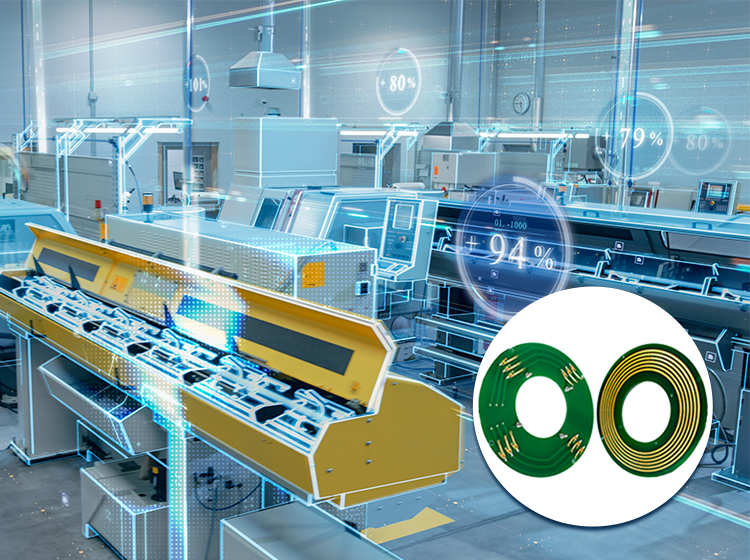
Medical Equipment
The complexities of medical equipment, such as MRI machines and CT scanners, necessitate slip rings because they enable the smooth rotation of the gantry while transferring critical high-resolution imaging data in real-time. In these applications, the high reliability, low electrical noise, and robust data integrity offered by slip rings are necessary to maintain the precision and accuracy required in healthcare diagnostics. Additionally, their designs adhere to stringent safety standards and bio-compatibility requirements essential in the medical field.
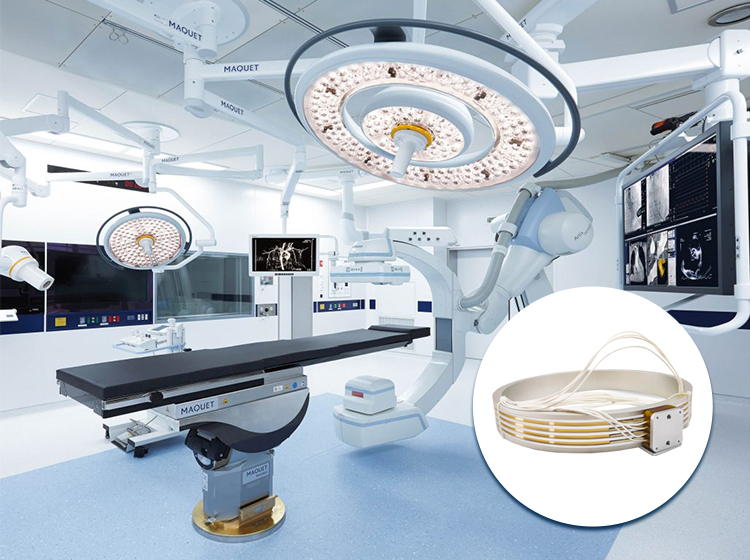
Wind Turbines
Wind turbines represent another strategic sector leveraging the use of slip rings. They facilitate the electrical connection from the stationary mast to the rotating blades and nacelle, ensuring that power generated by the turbine is transferred to the grid without interruption. Slip rings in this context must exhibit high durabilities, such as withstanding environmental stressors like temperature fluctuations, dust, and vibrations, which are typical in wind energy applications.
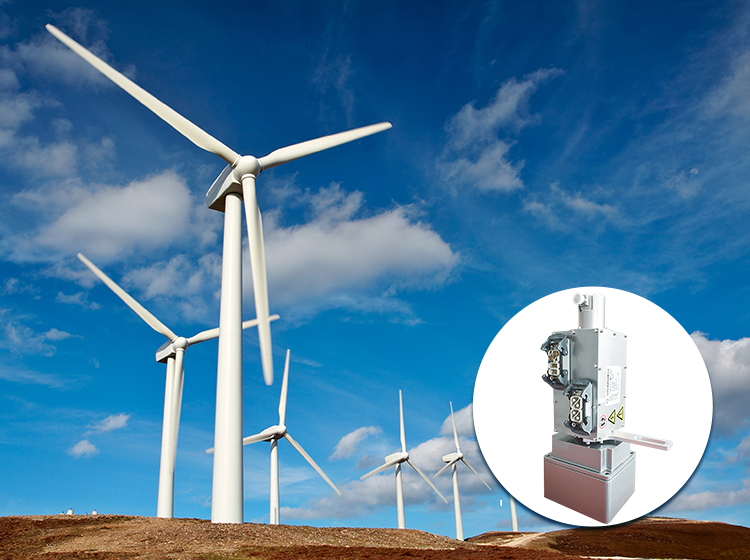
Aerospace and Defense Systems
In aerospace and defense, slip rings are integrated into a plethora of systems including radar platforms, turrets, and weapon systems. One of the greatest challenges they address is the need for unfailing performance under extreme conditions—handling the high demands of complex data communication and rigorous power needs in potentially harsh environments. The reliable performance and durability of slip rings are mission-critical where failure may result in dire consequences.
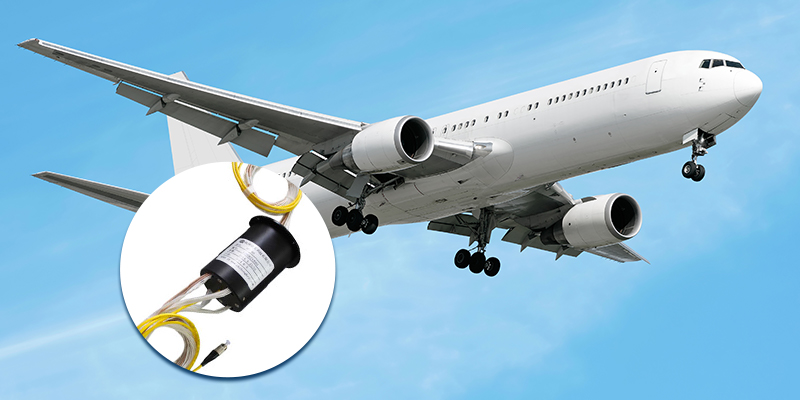
Robotics
Robotics incorporates slip rings in joints and end-effectors for continuous 360° rotation, providing power and data to the robotic arms while they perform complex and repetitive tasks. Whether in manufacturing, surgical robotic arms, or exploratory drones, slip rings must offer precision and compactness, enabling robots to have the flexibility and uninterrupted functionality needed for sophisticated operations.
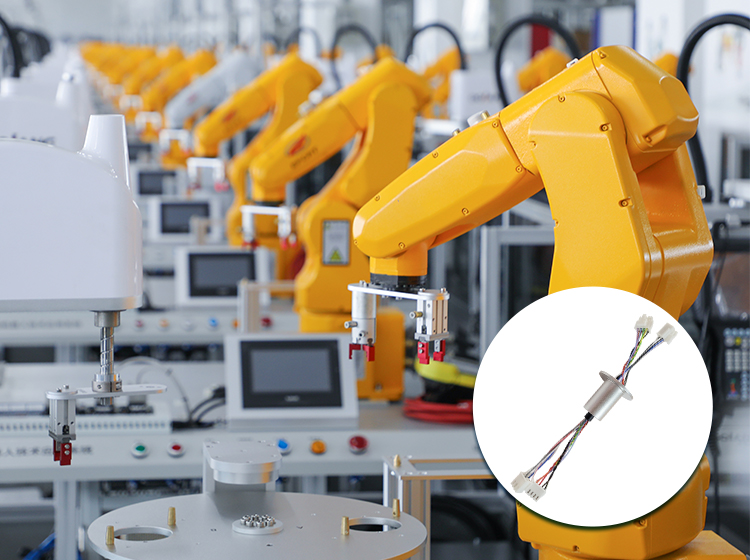
Besides these fields, slip rings are used in marine applications, security camera systems, satellite communication, amusement rides, and various other domains where the transfer of electricity and signals between rotating and stationary parts is necessary. Each application comes with specific requirements and challenges—be it size constraints, signal integrity, resistance to environmental factors, or the need for maintenance-free operation—making the versatility of slip ring solutions invaluable across industries.
In essence, brush contact slip rings have become indispensable in the modern industrial landscape, facilitating not just function but innovation across an array of applications where rotational motion and data integrity are essential. As technology progresses, the role of slip rings will continue to evolve, accommodating the ever-increasing demand for efficient and reliable rotary coupling in a diverse array of industry sectors.
Conclusion
The importance of brush contact slip rings in various applications cannot be overstated. By understanding their operation, configuration, material, and performance factors, users can ensure reliability and efficiency. Ongoing research and development in this field will continue to enhance the performance and lifespan of brush contact slip rings in the future.
FAQs about Brush Contact Slip Rings
Q: How do I choose the right type of slip ring for my application?
A: Consider factors such as space constraints, performance requirements, and the specific needs of your application to select the appropriate slip ring type.
Q: When should I replace the brushes or slip rings in my system?
A: Regular inspections are necessary to determine if the components show signs of wear or damage, and replacement should be done to maintain optimal performance.
Q: How do environmental factors affect brush contact slip ring performance?
A: Exposure to extreme temperatures, humidity, or contaminants might impact the performance and lifespan of the slip ring materials. Consider these factors when selecting materials and ensure proper protection for your system.
Q: What is a brush contact slip ring and how does it work?
A: A brush contact slip ring is a device used to transmit electrical signals and power from a stationary part to a rotating part in a machine or system. It consists primarily of two parts: the brushes, which stay stationary, and the slip ring, which rotates. Brushes maintain continuous electrical contact with the rotating slip ring, assuring an uninterrupted electrical connection.
Q: In what conditions does a slip ring find its use?
A: Slip rings are employed when electrical power and/or signal transmission is needed between a stationary and a rotating part. They are used in numerous applications ranging from wind turbines, defense systems, and robotics to medical equipment, industrial machinery, and more. Every application has unique requirements for speed, load, signal type, and environmental conditions that the slip ring must meet.
Q: What factors affect the performance of a brush contact slip ring?
A: Several factors influence the performance of a slip ring, including current carrying capacity, voltage levels, rotational speed, and the stability of these parameters in varying temperatures. Similarly, minimizing electrical noise and interference is crucial. A slip ring’s performance depends on its material composition, construction quality, wear resistance, and maintenance practices.
Q: Why is regular maintenance important for the slip ring assembly?
A: Regular maintenance of the slip ring assembly is important to ensure long and efficient service life. As slip rings wear down over time and accumulate debris, their performance can be hindered, leading to potential failure. Maintenance practices typically involve cleaning, inspections, and replacements of worn-out components to keep the slip ring assembly functioning optimally.
Q: What are the typical wear and tear issues in a slip ring assembly?
A: In a slip ring assembly, common wear and tear issues include brush wear, slip ring wear, and contamination. Brush and slip ring wear occurs due to the continuous contact between the components during operation, while contamination results from the accumulation of dust, dirt, and other debris.
Q: What kind of maintenance and protective measures can extend the life of a slip ring assembly?
A: Establishing a regular maintenance schedule, conducting thorough inspections, cleaning regularly, using the correct cleaning materials, and replacing worn-out components promptly can help extend the life of a slip ring assembly. Furthermore, keeping the slip ring assembly sealed against contaminants and training maintenance personnel to understand the system intricacies are crucial steps.
See What We Can Do

